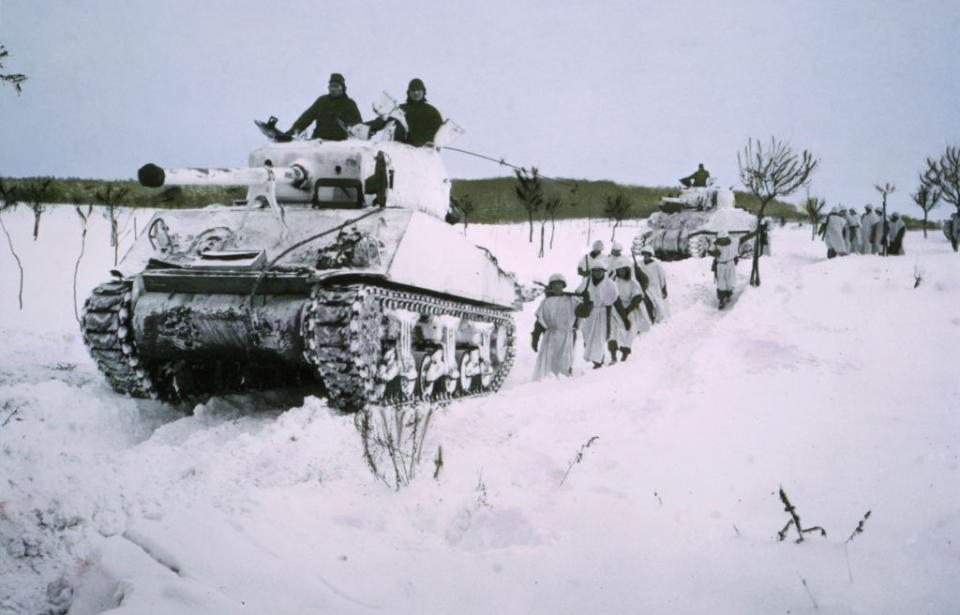Germany’s last major push on the Western Front came in the form of the Ardennes Offensive, more commonly known as the Battle of the Bulge. Fought between December 16, 1944, and January 28, 1945, it stands as one of the deadliest clashes of the Second World War. The images captured from this struggle reveal the intensity and violence of the combat.
Battle of the Bulge
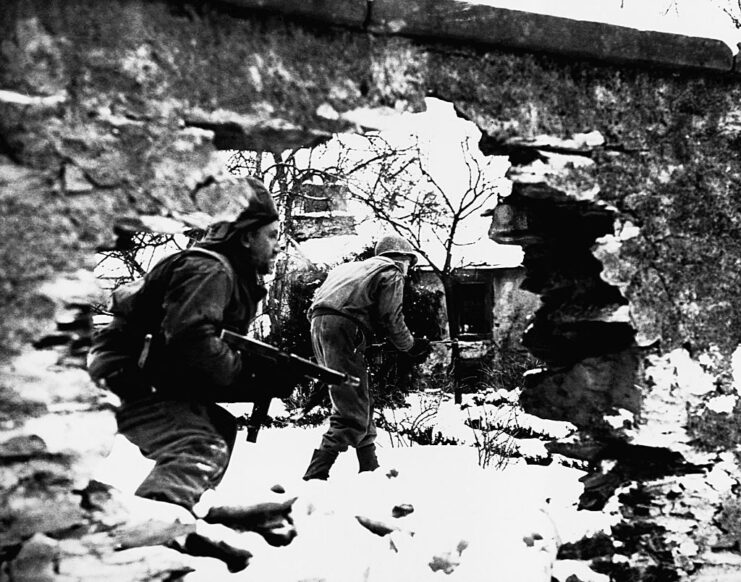
The Battle of the Bulge drew in more than a million soldiers, making it one of the largest engagements of the war. Germany’s objective was to seize the Belgian port of Antwerp, thereby cutting off Allied supply lines and encircling their forces. Hitler believed that if this plan succeeded, he could pressure the Western Allies into signing a separate peace agreement—one that excluded the Soviet Union and tilted strongly in favor of the Axis.
After the D-Day landings, Allied troops had broken through Normandy and surged across Europe at an unexpectedly rapid pace. This progress, however, came at a cost: the men had stretched their supply networks to the breaking point, leaving them fatigued and under-equipped. In the Ardennes, commanders paused the advance to regroup, rest, and bring in reinforcements.
The Allies considered the thick forests and rugged landscape of the region an unlikely setting for a German offensive. Poor weather also limited air reconnaissance, masking German movements. On December 16, 1944, when the Wehrmacht struck with force—over 406,000 troops, thousands of vehicles, and more than 4,000 artillery pieces—catching the Allies by surprise.
Yet the German advance soon faltered. The same terrain that had concealed their attack now slowed them down, while American forces put up far stronger resistance than expected. By December 22–23, German units pushing toward Foy-Nôtre-Dame found themselves funneled into narrow routes of retreat. When the skies cleared, Allied aircraft returned in strength, devastating enemy troops and cutting off their supplies.
By the middle of January 1945, the offensive had collapsed. German forces, drained of men and resources, suffered between 67,000 and 100,000 casualties. The Americans endured nearly 81,000 losses, but the battle marked the effective end of Germany’s ability to mount large-scale operations in the West.
US infantrymen in the Ardennes
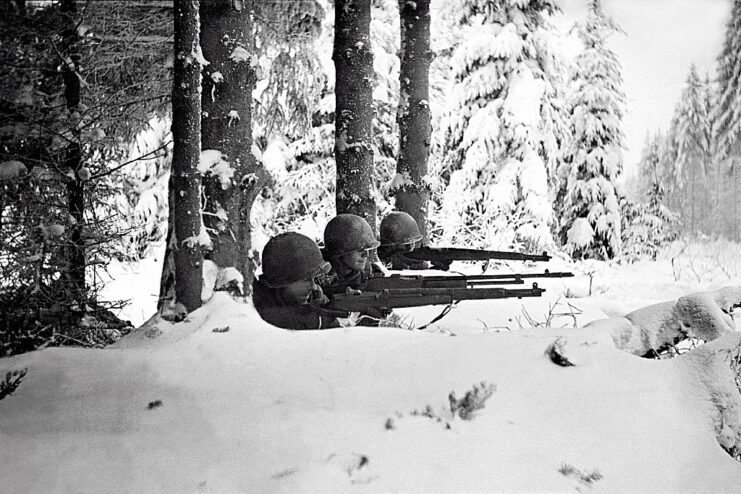
According to the US Army Center of Military History, approximately 500,000 American soldiers participated in the Battle of the Bulge. They were vastly outnumbered by the enemy, with the Department of Defense saying the ratio of US to German troops was five to one.
Tanks and the Battle of the Bulge
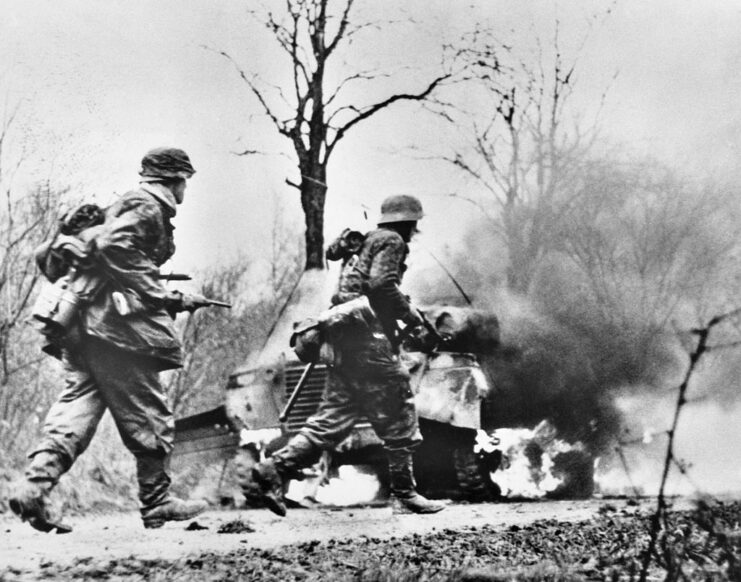
The Battle of the Bulge marked the final major tank battle in Western Europe, where the dense forests and rugged terrain posed big challenges for their deployment. The Germans, notably, committed a substantial portion of their armored forces against the Allies but achieved limited success.
Among the most remarkable tanks in this battle was Cobra King, an M4 Sherman “Jumbo.” It pierced the German lines in Bastogne on Christmas, providing essential support to the besieged troops of the 101st Airborne Division.
Villages and towns reduced to ruin
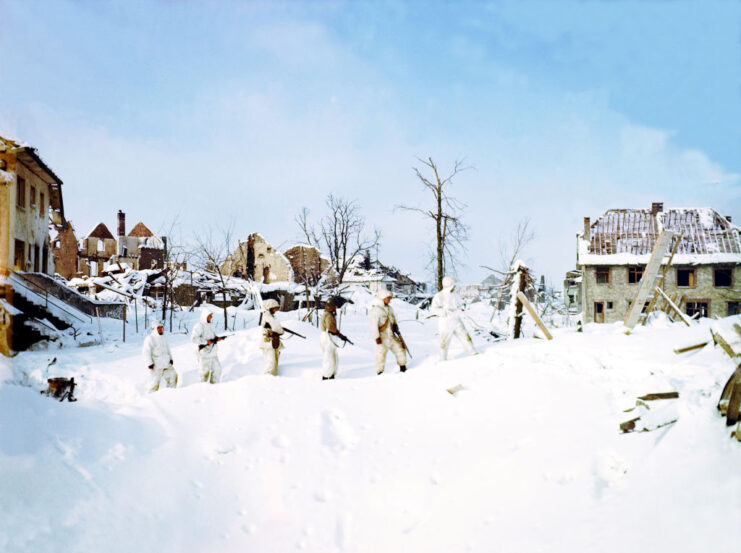
During the Battle of the Bulge, numerous Belgian towns and villages, including St. Vith, were left in ruins. St. Vith became the center point of a heated engagement between the German 5th and 6th Panzer Armies and the US VIII Corps from December 16 to 21, 1944.
Facing the two most formidable German units deployed in the Ardennes, the Allies stood little chance. Although the defeat extended several days beyond the December 17 deadline, the Wehrmacht ultimately achieved victory.
Prisoners of war (POWs)
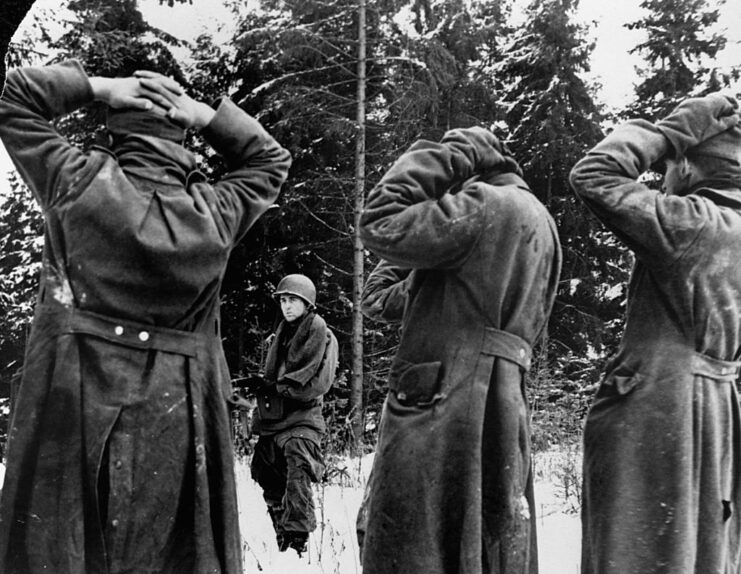
As can be expected during wartime, prisoners of war (POWs) were taken during the Battle of the Bulge. Records state that about 30,000 Germans were taken prisoner by the Allies during the engagement, making up a significant portion of their casualty total. On the flip side, approximately 23,000 American soldiers were captured by the Germans during the fighting.
On the lookout for snipers
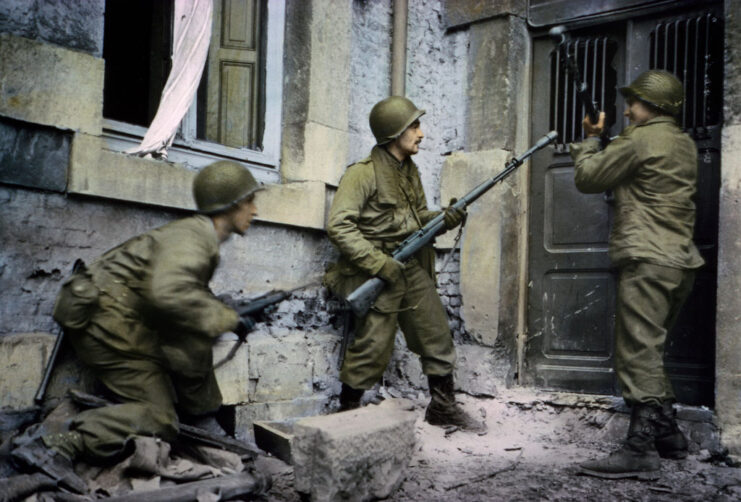
As with every other battle that occurred on land during the Second World War, both sides had to be on the lookout for snipers, whose expertise with a rifle could take out soldiers without their location ever being known.
One sniper to see action during the engagement was Ted Gundy, who served with the US 99th Infantry Division.
Celebrating Christmas amid the fighting
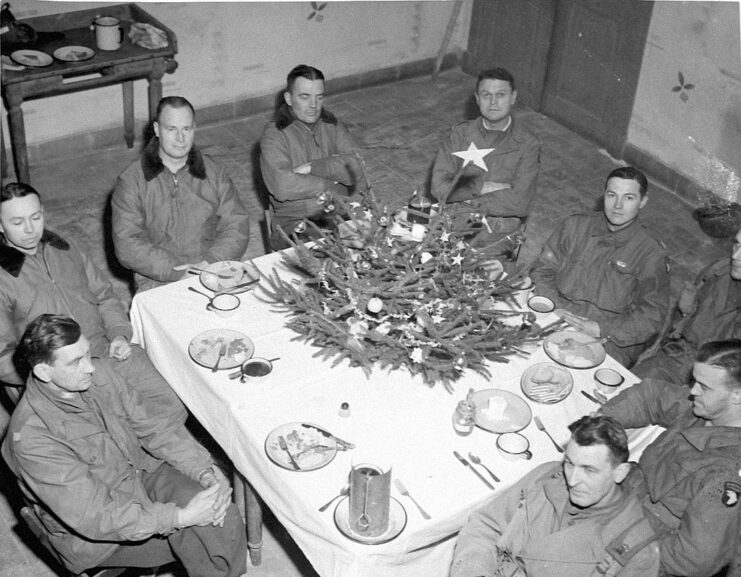
Just because they were in the middle of a fierce battle doesn’t mean the Americans didn’t celebrate Christmas. The above photo shows members of the 101st Airborne Division sitting around a makeshift Christmas dinner during the Siege of Bastogne. The next day, the Germans encompassing the town were defeated by the US Third Army.
Airborne troops participated in the Battle of the Bulge
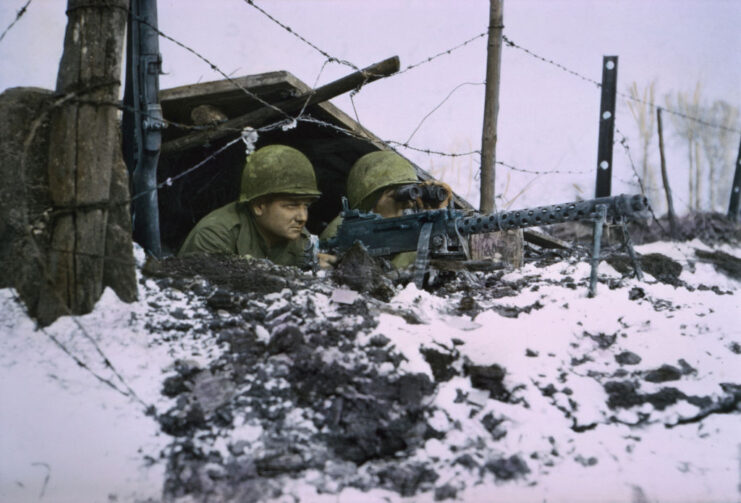
Innumerable airborne troops participated in the Battle of the Bulge, including the US 82nd and 101st Airborne Divisions. They engaged the Germans in some of the fiercest fighting of the engagement, with much of their encounters resulting in house-to-house combat.
Fighting in harsh weather conditions during the Battle of the Bulge
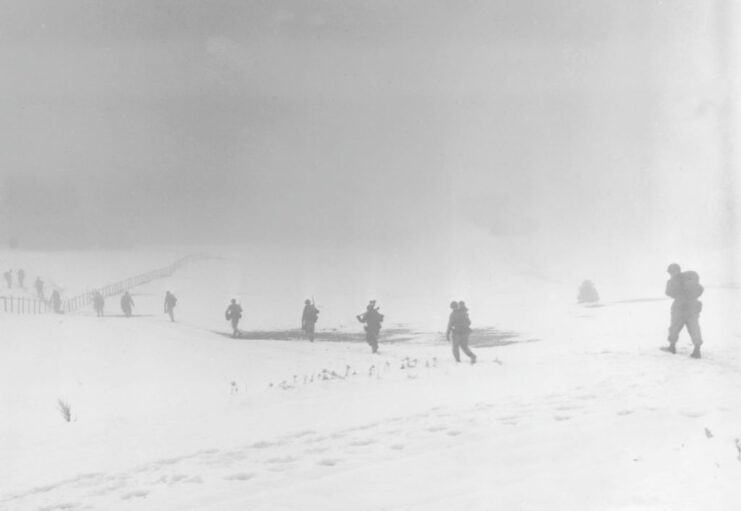
As aforementioned, the weather conditions were particularly harsh in the Ardennes region, and it took a while for the snow and strong winds to stop battering the troops. According to the Associated Press, there was “about 8 inches of snow on the ground and an average temperature of 20 degrees Fahrenheit (about minus 7 C.).”
While the poor weather initially helped the Germans in the early days of the Battle of the Bulge, it eventually caused them issues. What’s more, when it finally cleared, the Allies were able to call in reinforcements, which allowed them to secure a hard-fought victory.
Dropping supplies over Bastogne

The Siege of Bastogne cut off members of the 101st Airborne Division from their comrades, and the poor weather meant that the Allies couldn’t resupply or perform ground attacks. When the German hold on the town was broken on December 26, 1944, the Americans were once again able to drop supplies.
Camouflaging into the snow
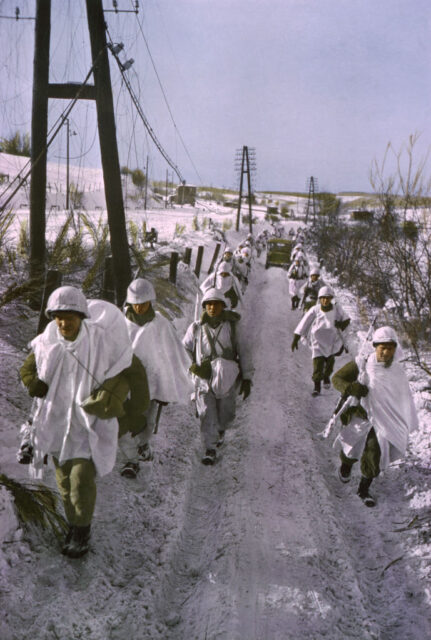
Given the Battle of the Bulge was fought in December and January, it’s not surprising that the troops had to navigate the snow-covered terrain. The powdery precipitation can be difficult to camouflage against, given typical military uniforms are green and brown, but some tactics were used to varying degrees of success, including snow camouflage capes, as seen above.
Operation Bodenplatte
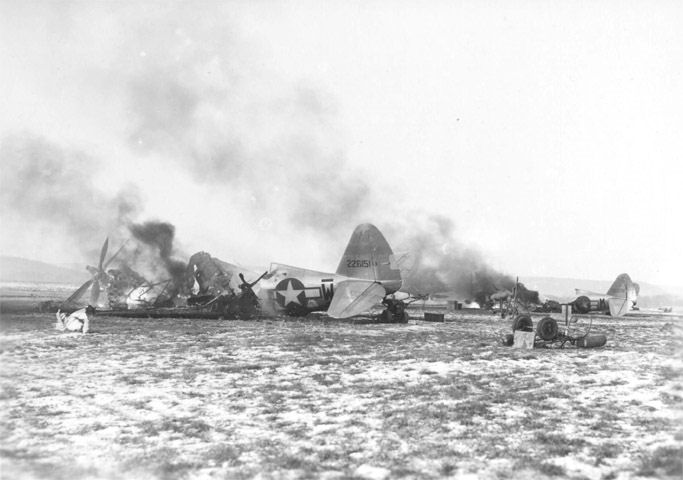
Operation Bodenplatte was launched as part of the Battle of the Bulge on January 1, 1945. The aim was to devastate the Allied air strength in the Low Countries, but it wound up crippling the Luftwaffe. Issues abound, with the Germans losing about 40 percent of their aircraft, many to friendly fire. What’s more, 143 pilots were killed or deemed as missing in action (MIA), while another 21 were injured and 70 were taken as prisoners of war.
The Allies fared much better. They only completely lost 250 aircraft. Approximately 150 of the ones that were damaged were easily repaired, meaning they were back in the skies within a week of the aerial assault.
British soldiers fought alongside the Americans
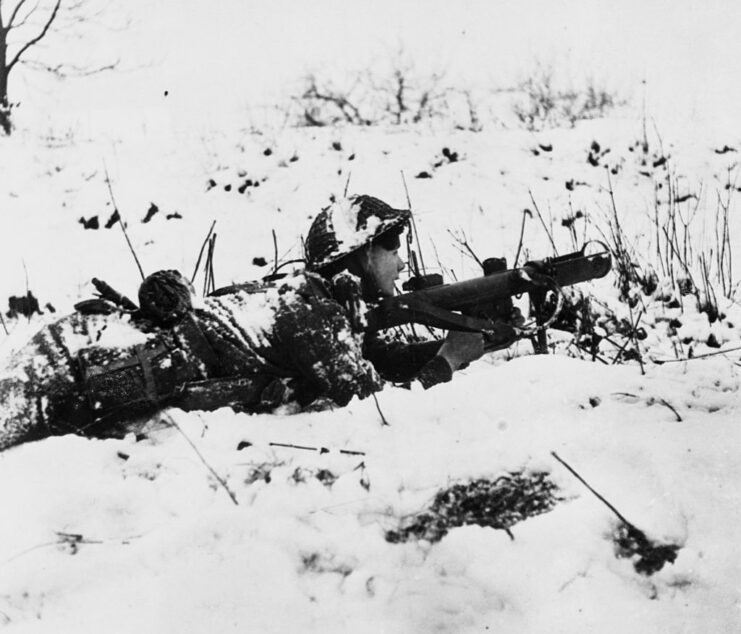
While the majority of the discussion centers around the American soldiers who fought in the Battle of the Bulge, the fact remains that there were British troops present, as well. Approximately 55,000 – including the 1st Canadian Parachute Battalion – fought in the engagement.
George Patton and Anthony McAuliffe during the Battle of the Bulge
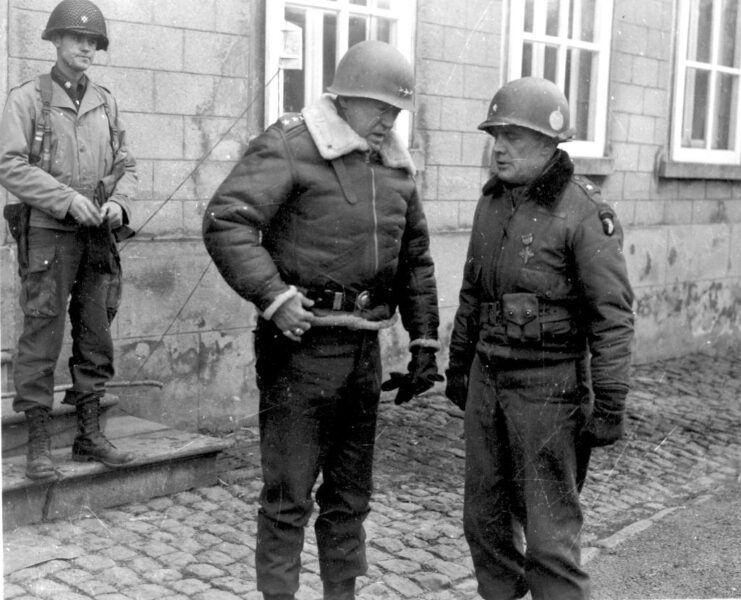
More from us: The Real-Life US Marines Behind the Characters of ‘The Pacific’
Both George Patton and Anthony McAuliffe played a big role in the Battle of the Bulge. McAuliffe was the acting commander of the 101st Airborne Division during the Siege of Bastogne, while George Patton’s US Third Army was the one to break through the German forces and relieve the beleaguered paratroopers.
